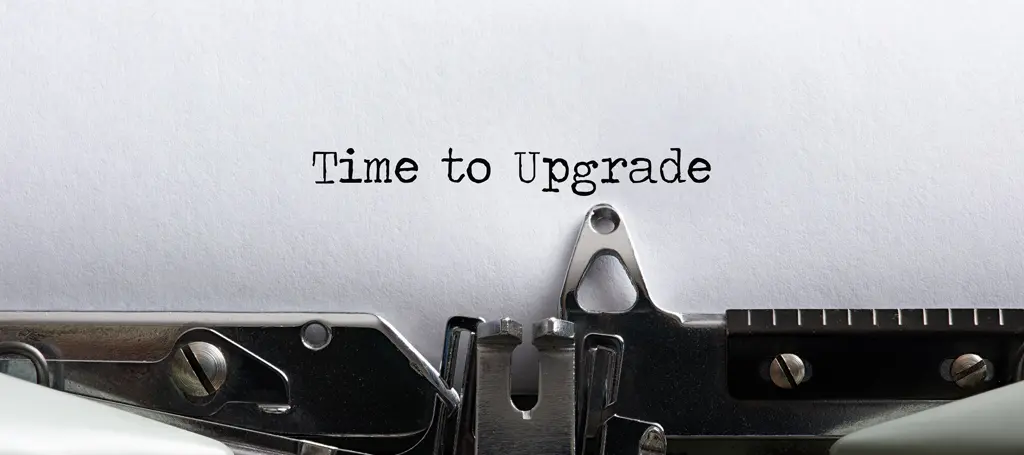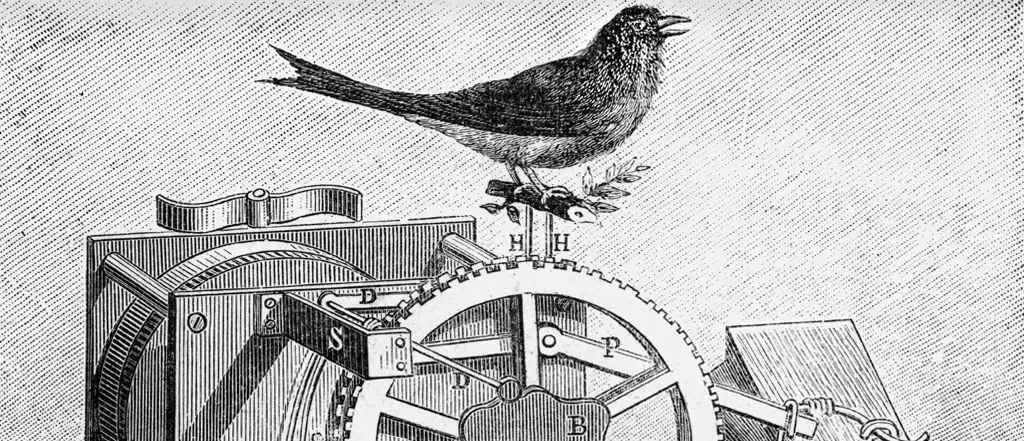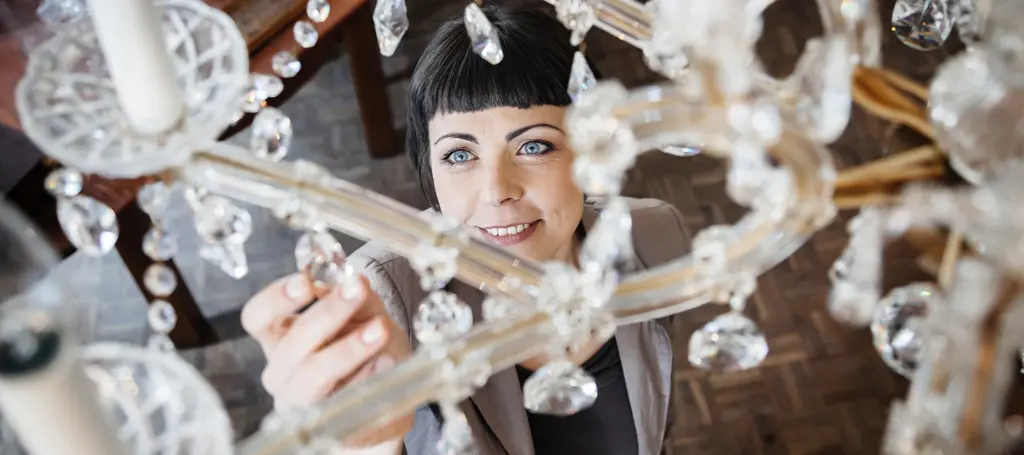In a world where technology and creativity intersect, sellers and artisans are harnessing the potential of artificial intelligence to elevate their craft and their business. It’s time to talk about ChatGPT for antiques dealers.
Mankind has been imagining artificial intelligence for centuries: Hephaestus, the Greek god of artisans, forged the artificial being Talos to help protect Europa. AI entered literature in 1872 with Samuel Butler’s satirical novel, Erewhon. Fast forward through dozens of imaginings of a world with AI, both utopian and dystopian, to the 2022 release of ChatGPT.
The buzz abounds since that release: ChatGPT garnered over a million users in its first week. But what about those who pride themselves on an appreciation of the unique, the one-of-a-kind? Of the artistry and talent of living, breathing human beings that inspires us to do more, not less? Is it possible to embrace artificial intelligence while remaining loyal to art and humanity?
Regardless of the answer, the future is upon us and it behooves us to carpe diem and make the advent of AI work for us.
Many artists and creative professionals are actively engaging with AI to explore new avenues. Purported benefits include:
-
- AI-generated content serving as a starting point or inspiration;
- AI-powered efficiency brought to repetitive tasks, freeing one up for the truly creative and personalized work;
- AI-supported experimentation with styles and ideas one may not have thought of without this tool.
If you are a seller of unique items and could use some help generating item descriptions or content, read on!

Ways in Which ChatGPT Can Make Life Easier for Sellers
Selling entails a lot more than just putting up your shingle, be that shingle digital or brick-and-mortar. Selling requires communication: describing your items, your store and more in a compelling way. It also requires at least some degree of marketing.
Even if you’re a writer at heart who thrills to the challenge of the blank page (or screen), editing is often easier than writing that first draft. ChatGPT is really good at written conversation, which makes it extremely helpful in writing (and editing) pretty much anything, including:
-
- Item descriptions: ChatGPT can create engaging descriptions that highlight the unique features and benefits of a product, using persuasive language and storytelling techniques to draw in potential buyers. It can weave in many details, including specifications, dimensions, materials used, and other relevant attributes. (Another good reason to complete as many fields as possible in your inventory manager when adding an item – the more information you can include in the ChatGPT prompt, the more complete your description.)
- Engaging content: ChatGPT can give suggestions for things like blog topics based on others you have written (or wish you had written); headlines for emails based on an existing series or marketing objective; potential FAQs or questions someone might have, based on content you load; a conclusion or introduction to content you have already written.
- Customization and tailoring to target audience(s): ChatGPT can tailor its language and tone to match the demographic you’re trying to reach, including the marketplace or platform on which you are selling. For example, a description for a social media post might need to be shorter and more attention-grabbing than one for a product page on your website.
- SEO optimization: Most people who sell online have become familiar with the term “Search Engine Optimization.” This term refers to how easily a search engine (like Google) can find your website or other content. ChatGPT can revise existing text from your website to optimize SEO. It can also generate potential keywords for your content on virtually any topic, and help you incorporate important keywords into content you create.
- Proofreading and copyediting: ChatGPT is a fabulous proofreader and is capable of copyediting, too. You can ask ChatGPT to proofread your content, and you can ask it for improvements, such as: “How can I make this text sound more lively?” Or, “Can you suggest ways to make the following text read more easily?”
It’s all about asking the right questions and keeping in mind the caveats.
(Note that the above are simple uses available easily to small businesses with a free ChatGPT account. AI technology is doing a great deal more legwork than this as part of packaged software and paid plans, including customer support, virtual shopping assistants, order tracking, feedback collection, and more.)

How ChatGPT Works (The Simple Version)
ChatGPT is far from infallible, and knowing how it works can help us understand (and be prepared for) its limitations.
ChatGPT works by processing and generating text based on the patterns it has learned from an enormous dataset of text from the internet: websites, articles, books and academic journals, transcripts of dialog, essays, exams and oh so much more. It uses a computer program called a transformer that’s good at understanding and predicting sequences of words. (The “GPT” in ChatGPT stands for “Generative Pre-trained Transformer.”) Note that ChatGPT cannot analyze or interpret images – it is a text-based model.
It learns to predict what words will come next in a sentence or phrase by churning through vast amounts of text. It places words and phrases into a multidimensional map that represents their relationships to one another. Words that tend to come together, like law and order, end up closer together in this map.
Basically, ChatGPT:
- Has learned how words fit together and what kind of sentences make sense;
- Looks at the words in the prompts it is given and evaluates what you’re asking based on the patterns it has learned;
- Generates a response that is essentially an educated guess as to what comes after the words in your prompt.
(You can very easily find explanations that are far more detailed, scientific and impressive, but our purpose here is to understand just enough that we can use the tool effectively.)
The responses ChatGPT generates can be immensely helpful in terms of the information it can access and provide you with, but also in that the responses are conversational, well-written, and serve as an excellent starting point for any piece of writing.

Caveats for Using ChatGPT
Fact checking: ChatGPT doesn’t have real-time access to external information and databases, so it might not always provide the most up-to-date information. Don’t rely on it for fact checking – rather, make sure you fact check what it provides you.
Accuracy is not guaranteed. I asked ChatGPT: “Does ChatGPT make up an answer if it doesn’t know?” The response:
“Yes, ChatGPT can sometimes generate answers even when it doesn’t have specific information on a topic. This is because it has been trained on a diverse range of text from the internet and might attempt to provide a response based on patterns it has learned, even if it doesn’t have accurate or relevant information.”
Yikes. But keep in mind this happens “when it doesn’t have specific information on a topic.” Such occasions should be extremely rare, considering the scope of material on which ChatGPT was trained. (As of this writing, ChatGPT tells me its last knowledge update was in September 2021.)
Tone and authenticity: ChatGPT does not possess true understanding or consciousness. It generates responses based on patterns it learned during training and doesn’t have personal experiences, beliefs, or emotions. It’s basically a smart computer program that can talk with you by mimicking how people write.
This sometimes comes across as a slightly strange tone, or lack of authenticity, even in technically perfect writing. If you have a particular voice for your business and you wish to preserve that, you will always want to do a thorough review of ChatGPT-generated content.
Essentially, ChatGPT can’t think (or research) for you. But it can help you organize your thoughts, and it can definitely make your life a lot easier in terms of crafting content.

Using ChatGPT
Getting started is easy enough:
-
- Set up a free account at chat.openai.com (helpful tips from Wiki)
- Click + New Chat
- Start typing
For any response, you can click Regenerate to get a different answer, or you can clarify your question by typing into the Send a message field.
For example, I asked ChatGPT, “What are some names for an antique liquor cabinet or case?” It responded with a lovely description of a cellarette. I sent a message “What about a tantalus or cave a liqueur?” ChatGPT apologized quite graciously for omitting those and proceeded to give me complete descriptions of all three and the differences between them. Super helpful!
But that did help me realize that while ChatGPT has access to truly awesome amounts of information, it is programmed to respond to questions from the general public; presumably it will not overwhelm with every possible answer to a question; rather, it will start out with the simplest answer. It’s up to the user to clarify scope – again, the right questions.
Some tips for effectively using ChatGPT in generating content for antiques dealers:
-
- Provide clear instructions: When inputting a prompt to ChatGPT, be specific about the product’s key features, benefits, and any other information you want to include. ChatGPT also responds well to direction regarding tone for the content, word count, and any other notes on structure, such as including bullet points. The more precise your instructions, the better the generated description will be.
- Review and edit: While ChatGPT can produce great content, it’s important to review and edit the generated description, especially considering the caveats. You can fine-tune the language, adjust the tone, and ensure that all details are accurate.
- Add a human touch: Injecting a bit of your brand’s personality and voice into the description can make it more authentic and relatable.
As an example, let’s say you’re holding an antiques fair at the county fairgrounds, and you want to announce it in the local paper. Give ChatGPT the basic details and ask it to generate an announcement for the general public. Here’s what you might get, complete with emojis and hashtag:
🎉 Unearth the Past at the Antiques Fair! 🎉
🗓️ September 9th | 🏛️ County Fairgrounds
Discover a world of timeless wonders at our Fall Antiques Fair on September 9th. Join us at the County Fairgrounds for an enchanting day filled with rare treasures from various eras. From exquisite jewelry to vintage furniture, immerse yourself in the allure of the past. Embrace the thrill of the hunt and connect with like-minded enthusiasts. Indulge in gourmet treats, enter exciting raffles, and win unique prizes. Don’t miss this celebration of elegance and charm. Admission details and more at [website]. Mark your calendar now! 🕰️✨🔎 #AntiquesFair2023
Helpful, right?
The accuracy will of course depend on your prompt. Maybe you weren’t planning on raffles or prizes – ChatGPT made that up based on what usually happens at a county fair. Logical, and easy enough to edit.
In Conclusion
The news is good: it would seem the redundancy of humans is far from imminent, and that we have an excellent new tool in our arsenal that will help us rise to the challenges of selling one-of-a-kind items in a mass-marketed modern world.
Here at Ronati, the prosperity of all dealers of unique and one-of-a-kind items is at the forefront of our mission. We heartily welcome any helpful corrections, additions, expansions, tips, tools, or tricks on this subject.





